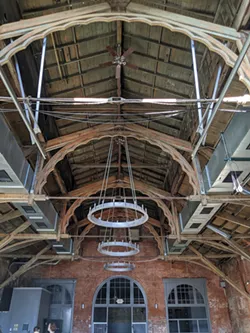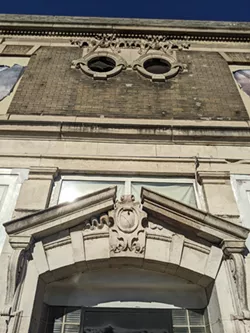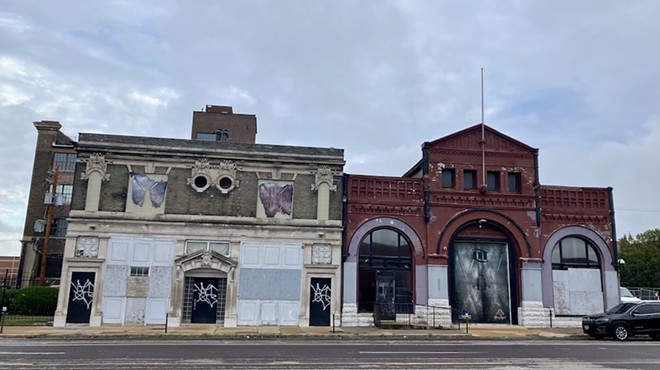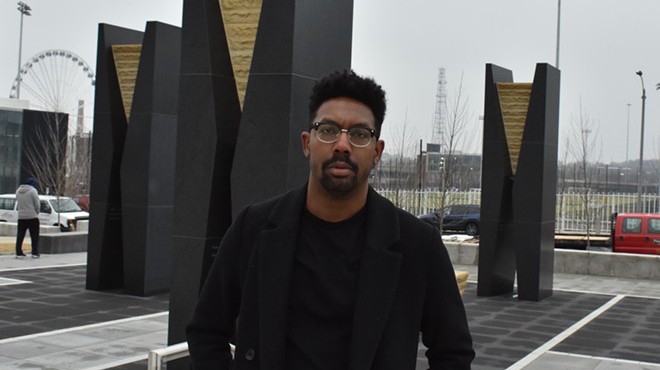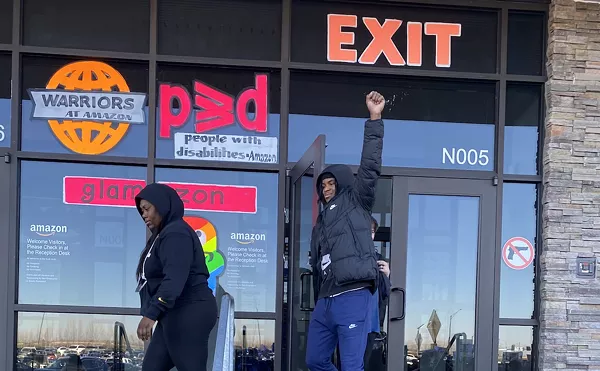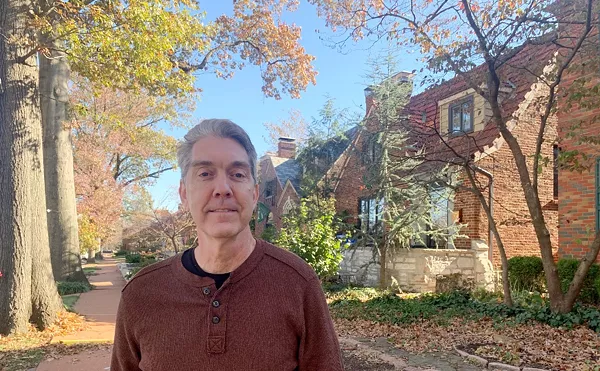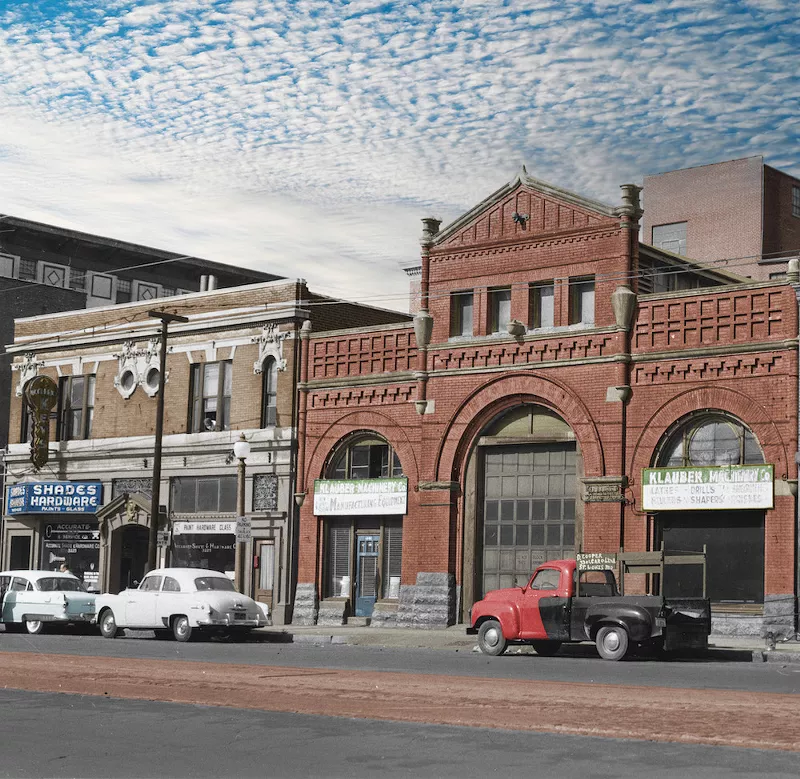
COURTESY OF MARK LOEHRER
This colorization of a historic photo by Mark Loehrer shows the buildings at 3223 Olive Street, left, and 3221 Olive at midcentury.
The buildings at 3223 and 3221 Olive Street have garnered significant attention as among the only remaining vestiges of Mill Creek Valley, the African American enclave that flourished in early 20th century St. Louis. Vivian Gibson, a former resident of the neighborhood and author of the acclaimed memoir The Last Children of Mill Creek, previously told the RFT that the 130-year-old buildings sit just across the street from the area that was razed as part of a "redevelopment plan" that scattered neighborhood residents across the city.
In September, Saint Louis University confirmed that they'd applied for demolition permits for the site, but also suggested their plans were flexible, saying, "[T]he University is also seeking to engage parties interested in acquiring and redeveloping the properties." A spokesman more recently confirmed that the city issued those permits on November 13.
But Andrew Weil, executive director of the Landmarks Association of St. Louis, says the SLU's plans to seek out a new buyer for the site appear no more than "lip service" — and says the Jesuit university has made it all but impossible for an interested party to acquire the buildings before what he's been told is now a deadline of just a few weeks.
In a letter to SLU President Fred Pestello yesterday, Weil blasted the university for violating what he says was a "gentleman's agreement" between Pestello and a Landmarks Association board member, Julius Hunter, to hold off on demolition until at least January 1.
As Weil explains it, Pestello and Hunter met on October 25. After that meeting, Hunter relayed that Pestello agreed to give the preservationists until January — and also agreed to let them tour the site to see its current conditions.
Originally, that tour was scheduled for November 3, Weil says. But SLU pushed it back until November 15. Then, while on site, SLU's vice president for facilities said that "they wanted to have any kind of deal completely settled within 20 days" — a full month before year's end, and, thanks to the interruption of the holidays, a seemingly impossible timeline for most real estate deals to close,
In his letter yesterday, Weil refers to the agreement with Hunter and begs for more time.
"We ask you to honor that agreement and not demolish the buildings prior to January 1, 2024. Landmarks Association implores you to see the forest rather than the trees and to change course," he writes. "These buildings have stood for more than 130 years. During that time they have served many different purposes and survived periods of vacancy. They can be revitalized for the benefit of students, visitors and Midtown at large."
After the RFT first reached out for a comment last Friday, a Saint Louis University spokesman confirmed the timing of the permits being issued by the city, but did not provide additional context despite follow-up attempts.
Weil notes at least one of the buildings is eligible for the Register of Historic Places, and says that his nonprofit has offered to write the nomination to get them listed pro bono, which would open up the project to tax credits. Even so, he says SLU has done nothing to market the site to developers beyond finally taking down the signage suggesting the buildings were for lease.
After Hunter's meeting with Pestello, he reported back that it was the president himself who wanted action on the buildings, suggesting that Pestello sees them every day because they sit across from the parking garage he uses and that he considers them an eyesore. SLU seems to have no actual plans for the site.
"For now, they'll just grade and seed — god knows, they have plenty of grade and seed," Weil says.
Indeed, Weil notes that SLU has a long history of demolishing buildings near its campus, going all the way back to the 1950s and, yes, the Mill Creek neighborhood where Vivian Gibson and her siblings once lived. "Everybody thinks this was federal money that cleared Mill Creek, but SLU was responsible for a large part of it," Weil notes.
That legacy continued under Father Lawrence Biondi, president of the university from 1987 to 2013.
"When I started at the Landmarks Assocation in 2007, he was attempting to tear down a large part of what we now know as the Locust Business District," Weil says, referring to what's currently one of St. Louis' hottest neighborhoods for both tech companies and restaurants. "He succeeded with a number of buildings, and the only reason SLU didn't succeed with more is that developers had snatched them up."
Subscribe to Riverfront Times newsletters.
Follow us: Apple News | Google News | NewsBreak | Reddit | Instagram | Facebook | Twitter | Or sign up for our RSS Feed

